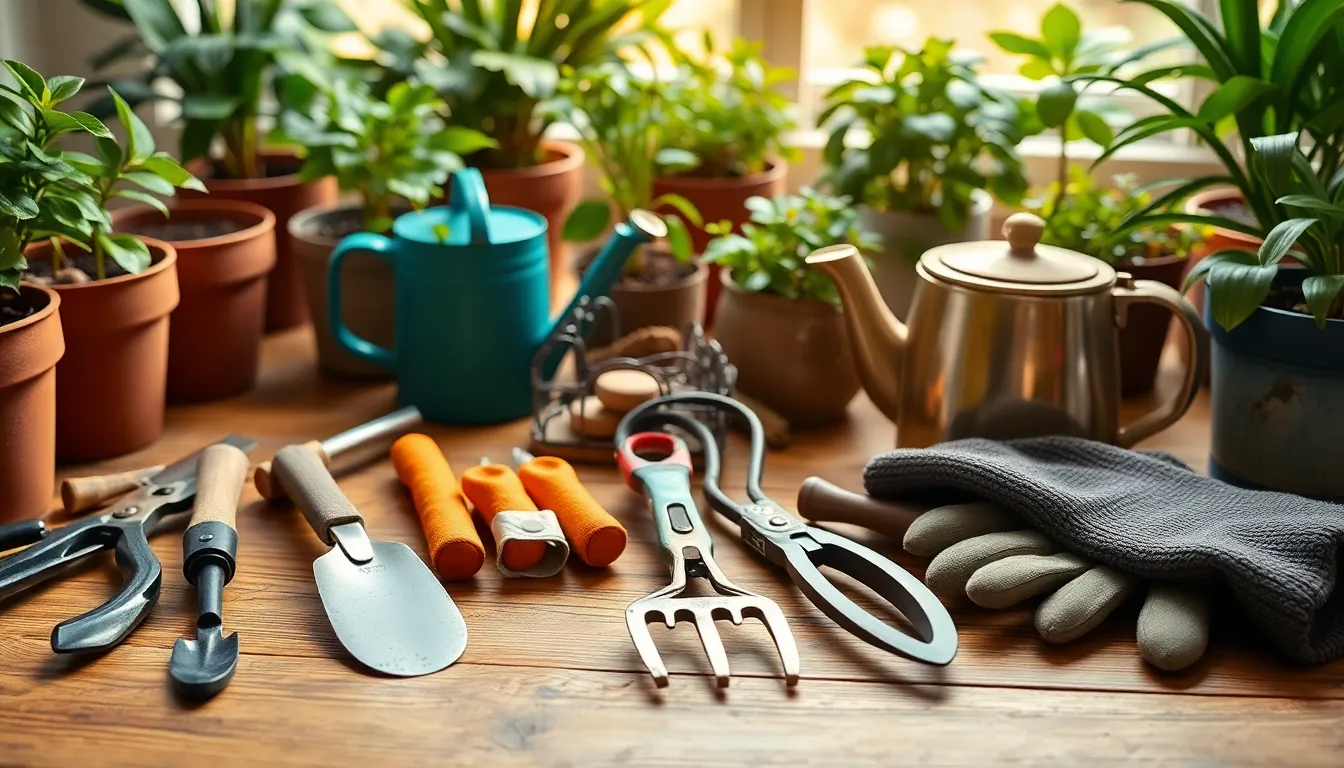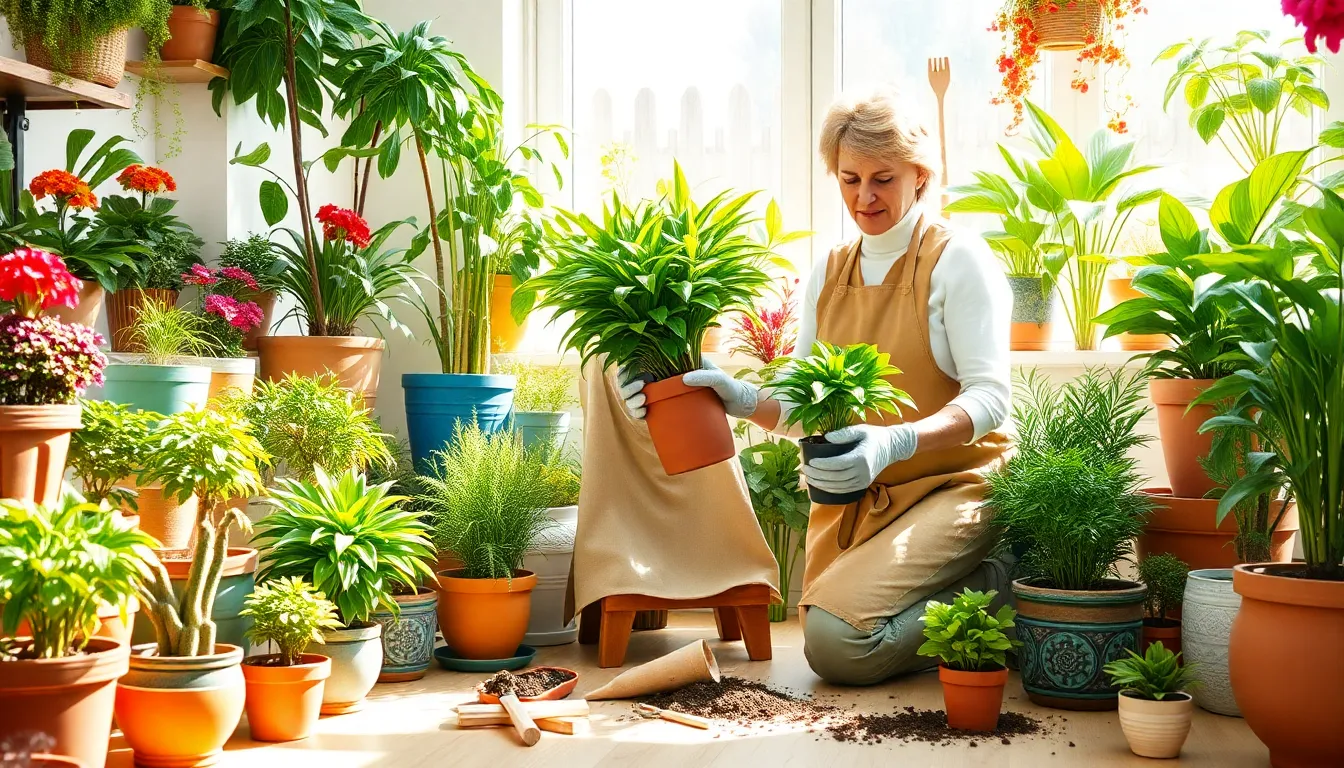Indoor gardening has blossomed into a delightful trend, turning homes into lush green sanctuaries. Imagine sipping your morning coffee surrounded by vibrant plants that not only purify the air but also elevate your mood. With the right indoor gardening supplies, anyone can cultivate their own little jungle—no green thumb required!
Indoor Gardening Supplies
Indoor gardening relies on specific supplies to thrive successfully. With the right materials, indoor gardeners maximize their plant health and growth.
Soil and Potting Mix
Soil plays a crucial role in indoor gardening. Different plants require specific soil types. A high-quality potting mix, often lightweight and well-draining, enables roots to access nutrients while preventing water retention. Organic blends, rich in nutrients, support plant health. Additionally, mixes containing perlite improve aeration and drainage. When selecting soil, consider the plant’s needs, whether it’s a succulent, herb, or flowering variety.
Containers and Planters
Containers and planters affect plant growth significantly. Choosing the right size ensures adequate root space. Materials like ceramic, plastic, and clay offer different benefits; clay pots provide breathability, while plastic containers retain moisture. Ensure drainage holes exist, as they prevent water logging. Matching container styles with indoor aesthetics enhances ambiance. For larger plants, consider self-watering planters, which make maintenance easier. Utilize decorative containers to express personal style, while still providing functionality.
Tools for Indoor Gardening

Having the right tools makes indoor gardening enjoyable and efficient. Essential tools enhance plant care and simplify maintenance tasks.
Hand Tools
Hand tools play a vital role in indoor gardening. Trowels allow for easy planting and transplanting of seedlings. Pruners help maintain plants by trimming dead or overgrown stems. A hand rake assists in removing debris and cultivating the soil’s surface. Gloves protect hands from dirt and moisture while improving grip. When choosing hand tools, prioritize comfort and durability to ensure long-term use.
Watering Equipment
Watering equipment is crucial for indoor plants. A watering can with a narrow spout allows for precise watering, preventing over-saturation. Consider self-watering globes, which provide consistent moisture for potted plants. Misters or spray bottles offer an effective way to humidify air around plants, especially in dry environments. Measuring cups assist in portioning water for different plant needs. Selecting the right equipment promotes healthy growth and reduces the risk of plant stress.
Lighting Solutions for Indoor Gardens
Proper lighting plays a key role in the success of indoor gardens. Various lighting options maximize plant health and promote growth throughout every stage of development.
Natural Light vs. Grow Lights
Natural light serves as an ideal light source for indoor gardens, offering energy efficiency and the right spectrum for plant growth. While sunlight provides essential photosynthetic energy, its availability varies based on location and season. Grow lights, on the other hand, ensure consistent lighting regardless of external conditions. LEDs and fluorescent lights mimic sunlight and allow gardeners to control the duration and intensity of light exposure. Each option has its advantages and serves specific needs, depending on the type of plants and available sunlight.
Choosing the Right Spectrum
Choosing the right spectrum is crucial in delivering the exact wavelengths plants require for optimal growth. Blue light fosters vegetative growth, promoting photosynthesis and robust foliage. Red light, particularly during flowering and fruiting stages, enhances bloom and fruit development. Many full-spectrum lights combine both blue and red wavelengths, catering to various growth phases and types of plants. Considering the specific needs of indoor plants will influence the choice of light spectrum. Selecting the appropriate lighting can lead to flourishing indoor gardens with vibrant, healthy plants.
Nutrients and Fertilizers
Nutrients and fertilizers play a vital role in indoor gardening. They provide essential elements that support healthy plant growth and overall vigor.
Types of Fertilizers
Several types of fertilizers exist to support indoor plants. Granular fertilizers offer slow-release options that nourish plants over time, minimizing the need for frequent applications. Liquid fertilizers, on the other hand, deliver nutrients quickly, making them ideal for instant plant feeding. Water-soluble options ensure even distribution when mixed with water. These varieties accommodate the specific needs of various plants, enhancing growth and flowering. Additionally, slow-release capsules can adjust nutrient delivery based on environmental conditions, promoting optimal plant performance.
Organic vs. Synthetic Options
Organic options promote sustainability by utilizing natural materials such as compost and bone meal. These fertilizers enhance soil health and support beneficial microorganisms. Synthetic options, derived from chemical compounds, offer precise nutrient formulations for immediate absorption. Indoor gardeners often select organic fertilizers for their long-term benefits, such as improved soil structure, or they opt for synthetic products for faster results. Both choices provide essential nutrients, allowing indoor plants to thrive depending on individual preferences and gardening goals.
Conclusion
Creating an indoor garden is a rewarding endeavor that brings life and vibrancy to any space. With the right supplies and tools, anyone can cultivate a thriving green sanctuary. From selecting the perfect potting mix to choosing appropriate lighting and fertilizers, each element plays a crucial role in plant health and growth.
Investing in quality materials not only enhances the gardening experience but also ensures that plants flourish. Whether someone is a seasoned gardener or just starting out, the joy of nurturing plants indoors is accessible to all. Embracing this trend can lead to a healthier home environment and a more fulfilling lifestyle.

